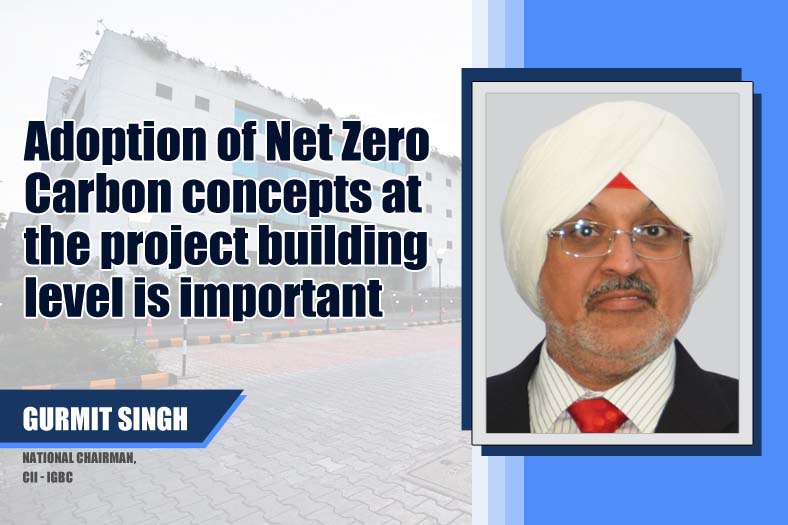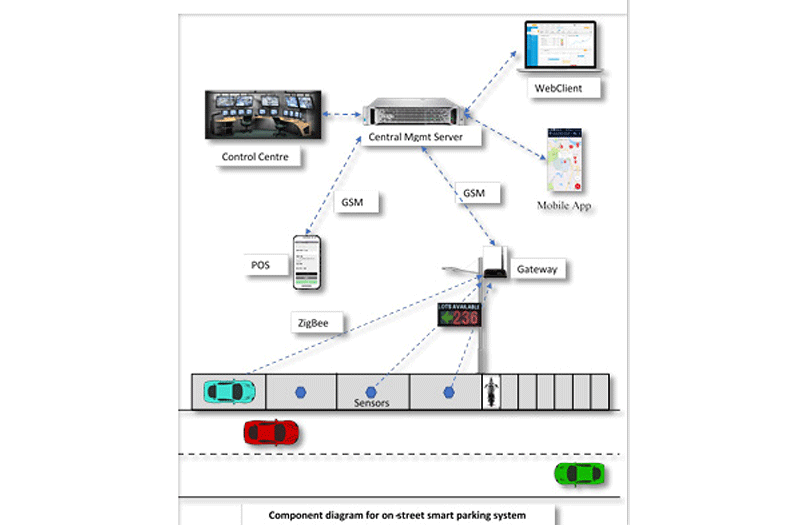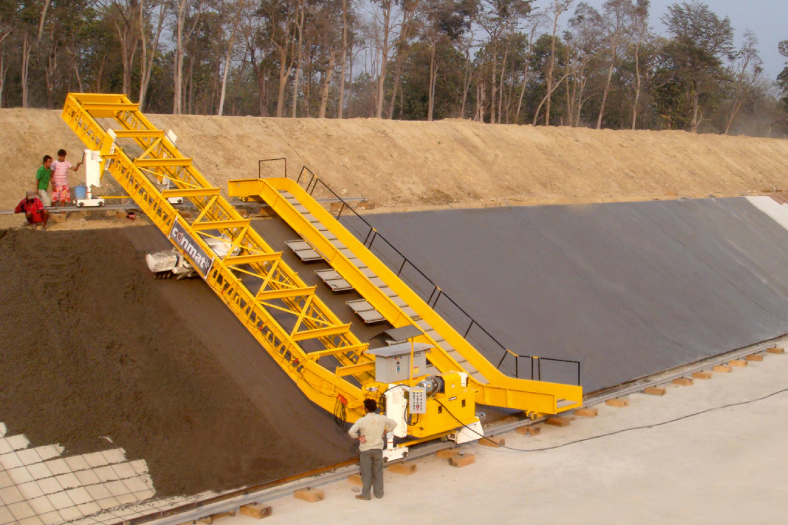Road to success, but challenges remain
Road to success, but challenges remain
Road sector has an important role to play in making India story successful. M Murali, Director General, National Highways Builders Federation, writes about the importance of upgradation and expansion of road network along with proper maintenance
Road network provides the arterial network to facilitate trade, transport, social integration and economic development. It facilitates specialisation, extension of markets and exploitation of economies of scale. It is used for the smooth conveyance of people and goods. Transportation by road has the advantage over other means of transport because of its easy accessibility, flexibility of operations, door-to-door service and reliability. Consequently, passenger and freight movement in India over the years have increasingly shifted toward roads vis-a-vis other means of transport.
The Government of India is targeting an average GDP growth rate in range of 9-10 per cent every year over the next decade. Needless to say, road sector has an important role to play in making India story successful. Also, traffic in India is increasing at an average rate in rate of 8-9 per cent a year. This further necessitates upgradation and expansion of road network in India along with proper maintenance of the network.
National highways The total length of national highways measured over 71,772 kilometres. This makes up a mere 1.7 per cent of India’s total road network but carry 40 per cent of the country’s road traffic.State highwaysThe state highways measure about 154,522 kilometres in length and comprise highways interconnecting Indian states; these account for 3.8 per cent of the total roads in India.
Major district roadsMajor district highways total 266,058 kilometres; these make up the 2nd largest chunk of roads in India at 6.5 per cent.
Other district and rural roadsRural and other roads (total 3,617,240 kilometres in length) are critical components of the rural economy in India and make up 88 per cent of total roads (41,10,500 kilometres).
Increasing private sector participation• Government policy to increase private sector participation has proved to be a boon to the infrastructure industry with a large number of private players entering the business through the PPP model.• The type of PPP models used in road projects are BOT toll and BOT annuity.
Partnerships between Indian and foreign firms• With the Government of India permitting 100 per cent FDI in the roads sector, most foreign companies have formed partnerships with Indian players to participate in the sector’s growth story.
India’s renewed focus on infrastructure• Infrastructure is the key to supporting double-digit GDP growth in India during the medium to long term.• The government has hence made infrastructure development a key policy issue and plans to spend $1.04 trillion during FY13-17 on the sector. Success of India’s Five-Year Plans• Through Five-Year Plans, India has increased the length of national highways from 21,378 kilometres during the late 1940s to 71,772 kilometres by the end of the 11th Five-Year Plan (FY08-12). • The 9th Five -Year Plan (FY1997-FY02) recorded the largest addition to the highway network (23,814 kilometres).
Increased private participation in road sector • The BOT model’s share among the total highway projects has increased sharply over the years. It rose from 10 per cent in FY05 to 31 per cent in FY10.• Road construction projects awarded to BOT companies went up at a CAGR of 62 per cent over FY05-12 to about 6,067 kilometres.• In FY12, highway projects awarded to private companies rose to 6,067 kilometres.
Profile of road development programmes in India Development modes road projects in India are implemented primarily on three modes: • Item rate contracts (IRC) also commonly known as engineering, procurement and construction (EPC) contracts• Design, build, finance, operate and transfer (DBFOT) contracts on toll basis, and DBFOT contracts on annuity basis• The DBFOT (Toll) and DBFOT (Annuity) modes are collectively known as public private partnership (PPP) modes of development.
Prioritisation of modes as far as the PPP projects from the central government are concerned, policy specifies that DBFOT (Toll) mode is to be given priority followed by DBFOT (Annuity) and EPC contracts. At state level, there are specific programmes developed for development of roads on DBFOT (Toll) or DBFOT (Annuity) basis.
Road development programmes from statesVarious states are quite active in road development through PPP modes as well as through EPC contracts. Many states have created dedicated road development agencies to focus on road development through PPP. While any single state might not offer a huge pipeline of projects, collectively state level projects have already started attracting attention of major developers and investors.
Success factorsSuccess factors for bid stage financial and risk analysis returns from PPP projects in road sector are highly sensitive with respect to certain business parameters. Estimates of these parameters and strategy relating to the same have significant impact on the chances of winning a project as well as on the range of returns from the concerned project. In general, there is significant variation between the financial quotes received from bidders and the financial quote estimated as reasonable by the awarding authority. It is generally seen that estimates from awarding authority are more conservative. It is also because of the fact that awarding agencies are mandated to take certain growth rates as standard for their financial analysis which are on conservative side in most of the cases.
It has been consistently seen that there is substantial variation between project cost estimates from awarding authority with respect to the cost estimates of bidders or successful bidder. Furthermore, amongst bidders too, it is seen that there are significant variations in financial quotes for a project because of variations in estimates of inflation projections, traffic, traffic growth rates, project cost, maintenance costs as well as risks associated with the project. Such variation is also because of difference in strategy of bidders with respect to financial structuring, aggressiveness, target returns etc.
However, India has experience of implementing about 200 such PPP projects in road sector and thus various India-specific examples are available from which learning can be drawn.
Upsides potential in projectsAnnuity projects involve payment of fixed amount semi annually by the awarding authority. There are incentives built-in for early completion of the construction. Thus, annuity projects present an upside on returns for a developer or investor if the costs and construction period are effectively managed. However, toll project carries significant upside for the developer or investor. If the economic and traffic scenario is favourable and toll collections, and traffic is managed well by the project company.
ChallengesThe road sector witnessed a slump in projects as only 1,156 km of road projects being bid out by NHAI in FY13 which is about 17 per cent of the target of 7,000 km. The lower project awards have been on account of weak interest from private sector participants due to difficulty in raising funds, stressed financial position of many developers, delays in getting right of way and clearances, relatively less lucrative stretches in the offering as well as economic slowdown which has also impacted road traffic in the operational projects.
Furthermore, sales of automobiles (both passenger and commercial vehicles) have also witnessed de-growth in-line with slowing economic activities over the last few quarters which is likely to impact the future traffic (and hence toll revenues) until the economic activity revives.
Notwithstanding the sharp decline in project awards, the performance on the project execution front improved in FY13. Backed by strong pipeline of projects under execution, the completion rate for NHAI projects increased to 7.9 km a day in FY13 from average of 6.2 km a day in FY12. However, progress on the projects awarded in FY12 remained muted mostly in the absence of requisite right of way, clearances and inability to achieve financial closure.To reduce the uncertainty over land acquisition, NHAI has decided to award road projects only after substantial progress is made on the land acquisition and clearance fronts. Simultaneously, NHAI has stepped up its efforts on land acquisition.
However, the acquisition process is often elongated due to capacity constraints faced by NHAI and opposition from land owners primarily over the compensation amount. Furthermore, multiple clearances from different authorities required for project often adds to the time overruns and uncertainty.Further, de-linking of environment and forest clearance, and proposal to ease raw-material (aggregate) supply have been positive developments, which are expected to aid project execution. Nevertheless, coordinated efforts from multiple authorities are required to further streamline and shorten the clearance process.
However, given the large investments being planned infrastructure development funds (IDFs) will assume greater importance in channelising the much needed long-term debt funds into road sector.
Many lenders have introduced stringent conditions like 100 per cent right of way, clearance, and significant upfront contribution from promoters before the sanction and disbursement of the loan.
Bank lending to the sector was also constrained due to large requirement of the sector which could hit the internal sectoral exposure limit of some banks, and the unsecured tag associated with the road projects.On the later front, in March 2013, RBI has allowed loans to PPP road projects to be treated as secured subject to certain conditions, which is expected to improve lending to the sector to some extent.Subsequently, that given the stretched liquidity issues, the necessity of allowing exit option for the existing developers is long pending issue which is recently approved by the government in the substitution mode.
But the imposing of the penalty linked to project cost for exiting the present developers may be the biggest hurdle to attract investors.
ConclusionThe road sector projects in India can offer tremendous value to international developers and investors. Some of the key highlights of the same are:• Good pipeline of projects, presenting opportunities as well as experiences to learn from• Focus of government with policy and financial commitment• Availability of different project sizes and project structures with varying levels of risk• Model concession framework with clear and balanced risk sharing• Acceptance with lenders and investors• Availability of instruments to capture value• Viability gap funding from the government up to 40 per cent of total project cost• Tax incentives and Foreign Direct Investment (FDI) relaxations from the government• Availability of sector experts to mitigate risks and to develop and implement customised strategy.
M Murali, Director General National Highways Builders Federation
Cookie Consent
We use cookies to personalize your experience. By continuing to visit this website you agree to our Terms & Conditions, Privacy Policy and Cookie Policy.









